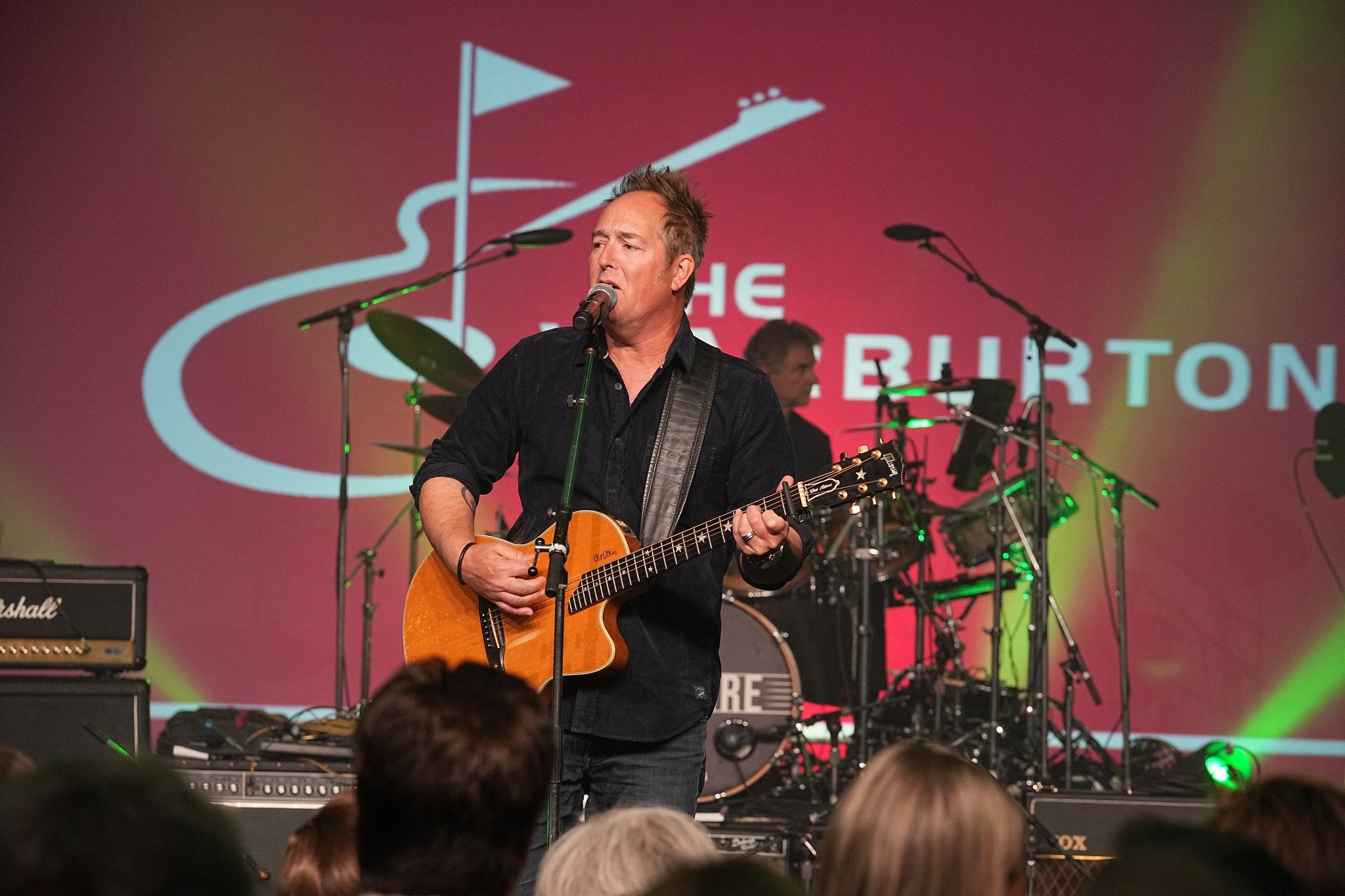EMERSON HART
LEAD SINGER OF TONIC
We often hear of writers setting out to pen the “great American novel” as an ode to an epoch of history to which they can speak at length. By the same token, Emerson Hart assembled a sonic version of this in the form of his third full-length titled 32 Thousand Days. Hart’s upcoming album tells the great American story of his 90-year-old stepfather (Arthur) who is a New York City native, lied about his age to join the merchant marines at 16-years-old and fought bravely in World War II. Hart takes the listener on a journey by examining the myriad of Arthur’s experiences during his life as well as his own.“He’s a big reason for my career in music,” says the Nashville-based singer and songwriter.
“When I was a teenager, he gave me a lot of freedom. At times when he should’ve been having a talk with me, he’d just give me twenty bucks and say, ‘Go buy some music’—and I would. He knew when to let me find myself. That persistence carried me through my career and so this album is inspired by his 90 years of living and what that might look like if I try to look through his lens.”Emerson is no stranger to penning hits over his 25-year career creating works of art that resonate with fans and quickly become classics. He fronts the multi-platinum GRAMMY® Award-nominated alternative rock institution Tonic that has racked up six Top 10 singles including “If You Could Only See,” which was the #1 most-played rock song of 1998. Tonic has sold over 4 million records, received multiple Grammy nominations, and toured the world. In addition to Tonic, Emerson built a growing solo discography. 2007’s Cigarettes & Gasoline garnered tastemaker praise and yielded two Top 20 singles. In 2014, Beauty In Disrepair arrived as a fan and critical favorite lauded by USA Today, Huffington Post, Guitar World, and many more. Following a rigorous tour cycle, he buckled down at his Nashville studio and set about crafting 32 Thousand Days. This time around, he embraced a minimalist organic approach when it came to instrumentation. The sonic simplicity drew focus towards the story itself allowing it to be more raw and stripped down to reflect the narrative of Arthur’s journey above the production. For the first time, he utilized pedal steel, enriching the musical backdrop with an artful and airy twang. However, the acoustic guitar provided what he refers to as “the main anchor for every song.” After eight months of writing, he tracked the entire album in just two weeks.Emerson introduces 32 Thousand Days by way of the soulful first single “Lucky One.” “It’s a testament to love,” he affirms. “Sometimes, when life is really at its lowest, it’s actually at its best.
When you learn the hard lessons, that’s when you sacrifice and truly fall in love. I was thinking of my stepfather in his twenties and the girls he met after the second World War, finding love, and making it through everything ultimately.”Elsewhere, the plaintive and poetic “32 Thousand Days” pairs a soft and steady beat with delicate strumming that offers up a direct tribute to his stepfather’s 32,000 days.The track “I Get You” delicately provides reassurance to a significant other, reaffirming love’s eternal bond with the refrain over hushed strumming. Elsewhere, finger-picked acoustic guitar vibrates just beneath vivid and nostalgic verses about how “Nirvana was our Bible when we needed to be saved” during the cinematic and catchy “Kids.” In the end, 32 Thousand Days exudes the timeless implications of any classic story. It’s meant to be shared and passed down from generation to generation.“This album is really meant to be listened to as one piece. Maybe you’ll feel connected to at least one of the snapshots in a part of somebody’s life. I’m looking for that one thing. You have that connection and photograph in your mind. It’s something to relate to. It’s a vehicle to get us through our own ninety-year journey.”

